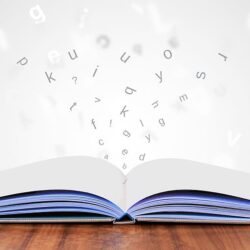Perfect Landing Page to Get Lit!
Finally, another way to sail the seas of literacy, here you will find a steady stream of inspiration that may inspire ideas of strategy, scaffolding, goal setting and ultimately, student engagement! We are navigating through unchartered waters as we embark on this journey of remote learning, while working to combat the dwindling levels of literacy. It’s through struggle and visualization; its through sharing, storytelling and expression that we build connections and learn lessons thereby contributing to a rise in literacy levels. So let’s dive deep into this journey and let the chips fall where they may!
Go on a Journey
So she thought she would go on to the next; there is always the next strategy. In my first few years of teaching I would enthusiastically take the next strategy in my arms and climb on the metaphorical lions’ back, holding tightly to his mane with one hand and the next moment it seemed as if we are flying through the air, “ahh hahaha” I’ve got it all figured out ; and then before I had time to think about it, I was on the other side only to land flat on my face. Up Up and away, the strategy worked, until it didn’t.
Read & Explore the CAFE Blog
The most powerful time to teach reading is before students begin to read. The Blog Postings will walk you through instructional practices for reading and writing in across the content areas on all grade levels. I call these tools CAFE- comprehension, accuracy, fluency and effective vocabulary and engagement techniques.
The research based topics that follow, will offer insight into barriers to comprehension, diagnostic tools and the most expedient ways to assess prior knowledge of individual students.
Visit the Corners of the Literacy Lounge
A Story About Grammar and the 4 Domains of Language
Adventure with Verbs
Hundreds must have seen it, and taken it for an ordinary word. Verbs are green, they are described as actions of nouns leaving a greenish streak behind it that glows. Green means go !
Adjectives
Hundreds must have seen it, and taken it for an ordinary word. Adjectives describes how something is done. Described as leaving a colorful streak behind it that glowed for some time for it explains brings words to life in color.
Nouns
Hundreds must have seen it, and taken it for an ordinary falling star. Albin described it as leaving a greenish streak behind it that glowed for some seconds.
Speaking Activity
Model a Think -aloud.
this provides a rich window into reading activity and a powerful way to model particular kinds of reading strategies.
Listening Activities
Emphasize the importance of listening skills and promoting discussion -encourage students to listen and follow up.
Activities such as -telephone
-listening to speeches
-listening to radio interviews
-silent discussions which encourage participation. On a blanks sheet of paper Each student sits in a circle and writes two questions about text. one literal and one to promote discussion. students pass questions to the right and ask each student to write an answer to one of the questions.
Reading Activities
Frontloading
Think aloud activity
Easy as 1,2,3! activity
parsing/segmenting paragraphs
Writing Best Practices
Frontloading
Model a Write-Aloud
-Do/What Activity
-My Name Activity
-Biopoem
















